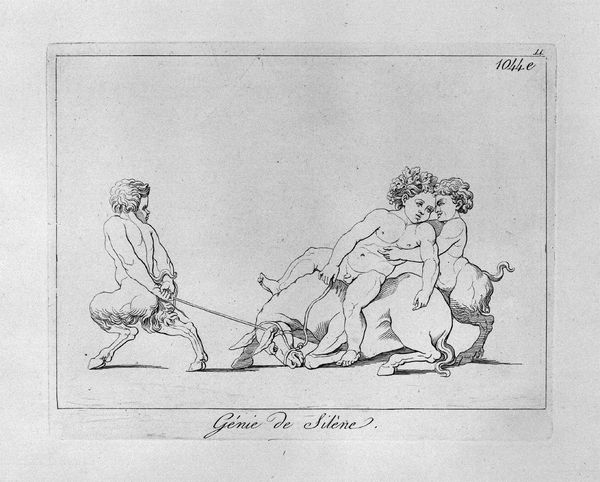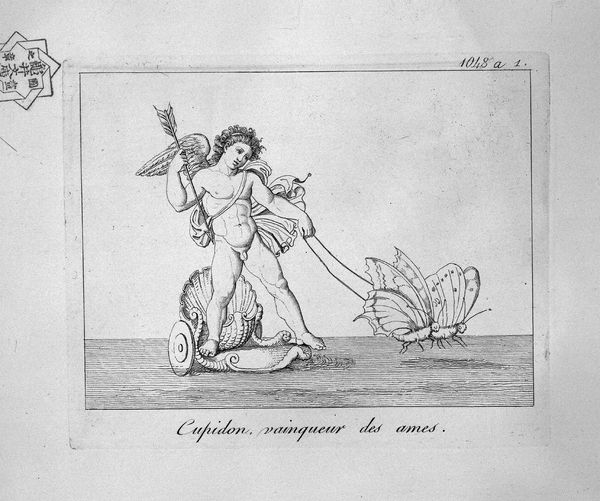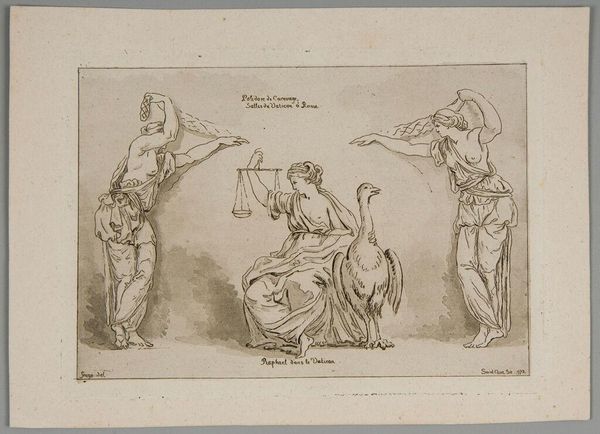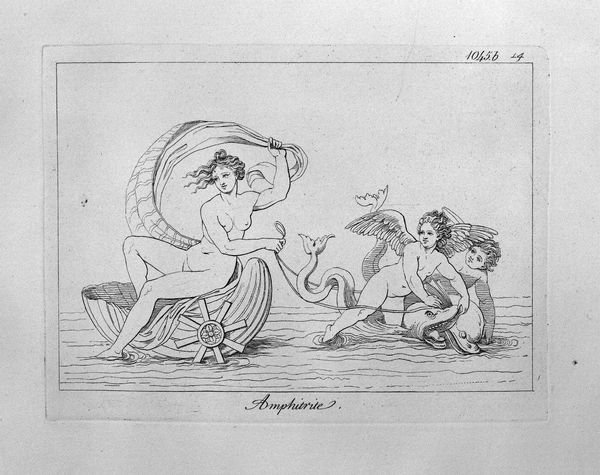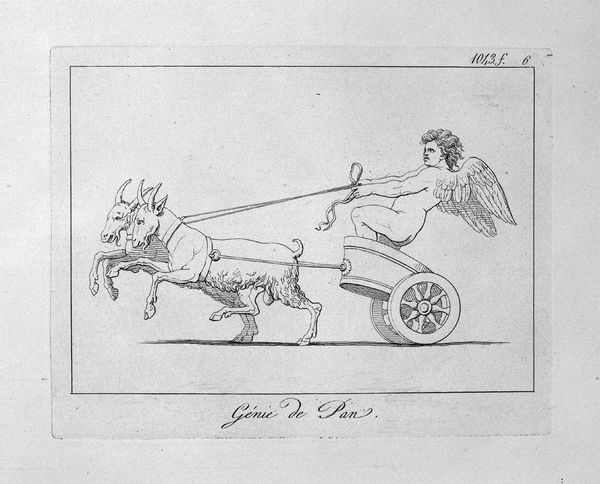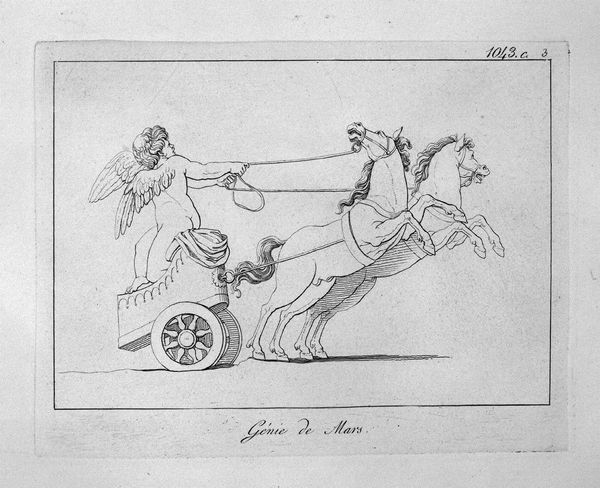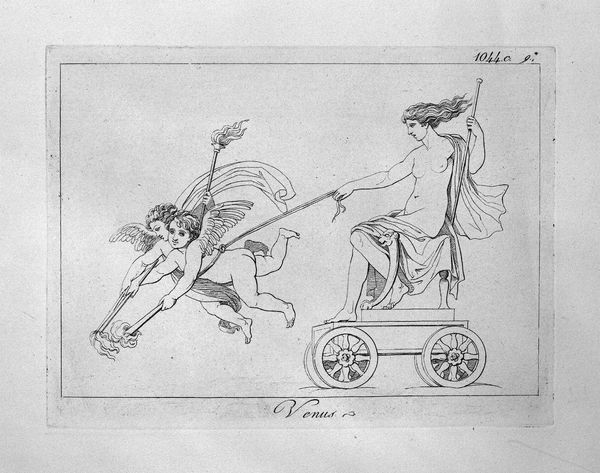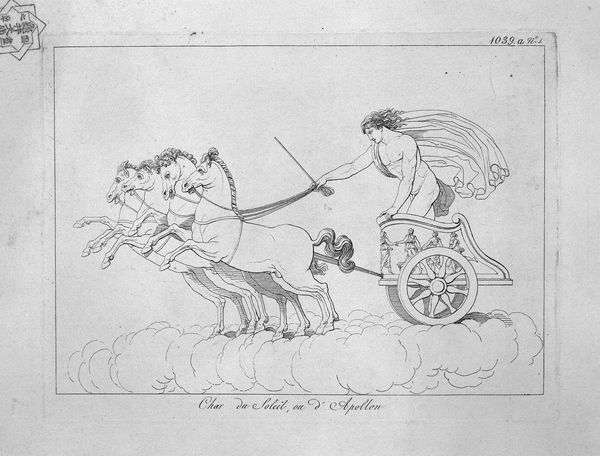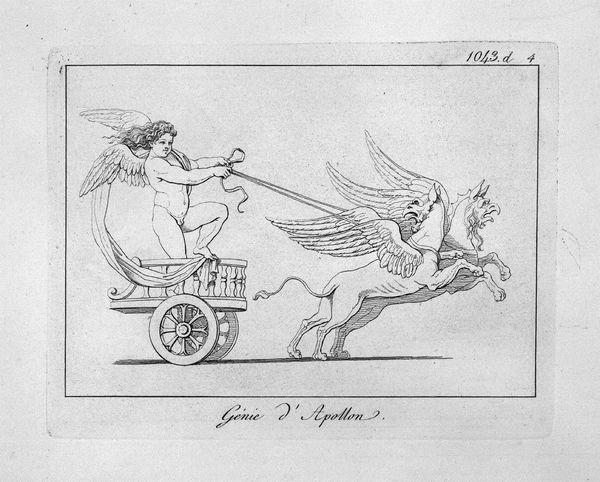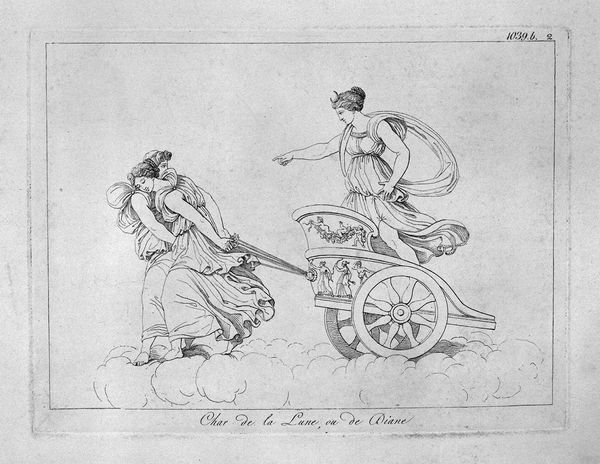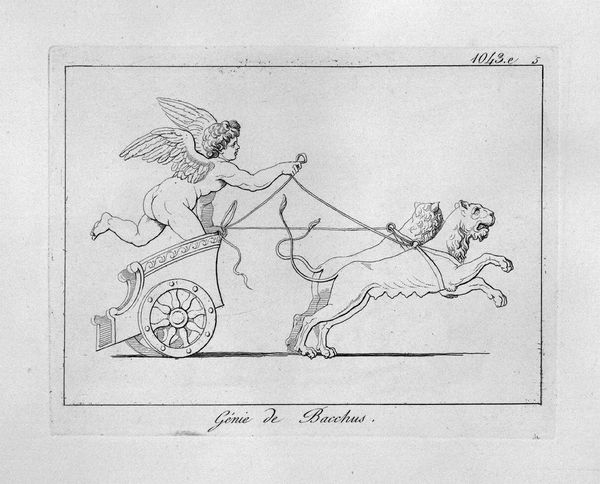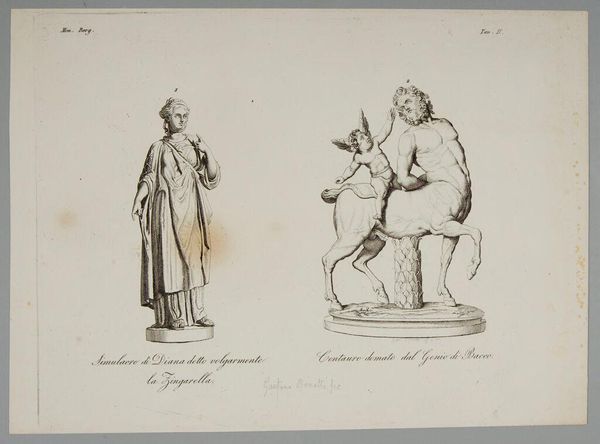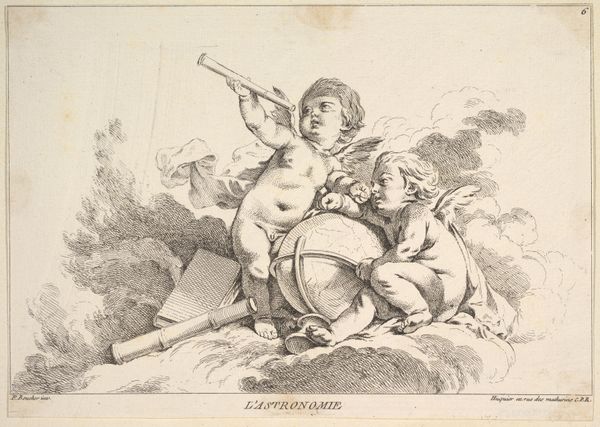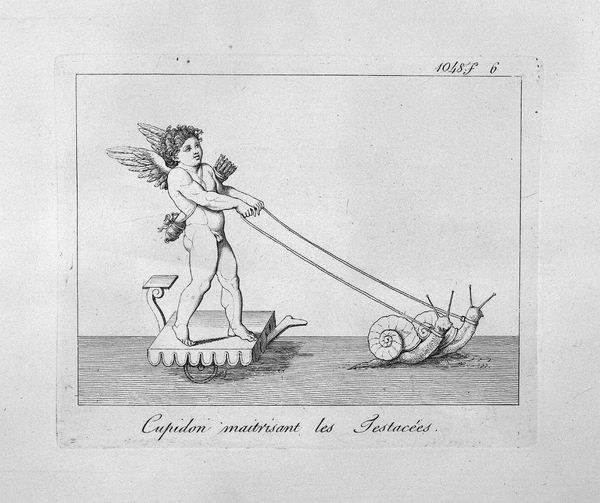
engraving
#
neoclacissism
#
figuration
#
roman-mythology
#
mythology
#
line
#
history-painting
#
engraving
Copyright: Public domain
Editor: This engraving, "Genius of Bacchus" by Giovanni Battista Piranesi, shows a cherubic figure riding a cart pulled by two satyr-like creatures. The fine lines give it an almost dreamlike quality. What strikes you most about this piece? Curator: I see a work deeply engaged with power dynamics and the complexities of mythological representation. The “genius” of Bacchus, typically associated with liberation and ecstasy, is here literally carried by figures that blur the lines between human and animal. It asks us to consider the exploitation inherent in these narratives. Editor: Exploitation? That's not immediately apparent to me. Curator: Look closer. The satyrs, figures often associated with unbridled freedom, are here harnessed, their agency suppressed to serve the comfort and display the "genius" of Bacchus. How might we interpret this scene through a postcolonial lens? The “civilized” riding atop the “natural,” so to speak? Editor: That’s a compelling point! I was focused on the historical context of neoclassical art, but now I see how the imagery reinforces social hierarchies. Curator: Piranesi, while working within neoclassical frameworks, was often critical of power structures. Consider the performative aspect of the Bacchus figure holding up that plate, as if offering something when in reality, others are doing the work. How might we read this through the lens of gender and the historically patriarchal structures of artistic patronage? Editor: This completely changes my perspective! I now see a much more subversive and challenging reading of a seemingly lighthearted mythological scene. Curator: Precisely. Art is never neutral; it's a reflection of and a participant in ongoing dialogues about power, identity, and representation. Hopefully you are taking with you an ability to situate art in this cultural context. Editor: Absolutely. Thank you; I definitely will.
Comments
No comments
Be the first to comment and join the conversation on the ultimate creative platform.
